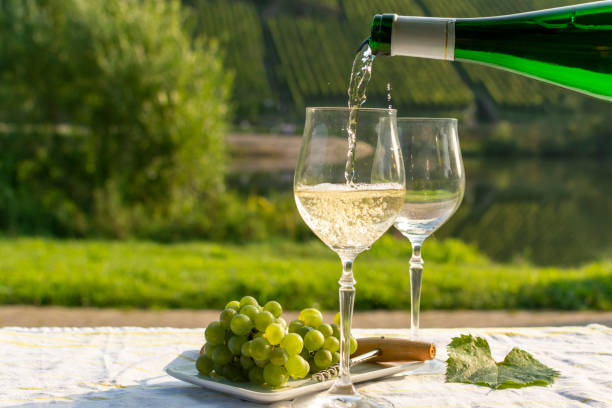Researchers have developed and successfully commercialized strains of yeast that produce “floral,” “rose,” and other aroma compounds in concentrations that shape wine styles.
This research is exciting because it allows winemakers to “dial up” desired floral and rose aromatics when needed and create consumer-driven floral qualities in newer wine styles.
Winemakers can choose from a variety of commercial yeasts that have varying degrees of influence on wine style. The majority of this variation is due to the complex interaction between multiple compounds. A single mix can be responsible for a particular flavor. One of them is rose aroma. Its intensity is primarily associated with the concentrations of 2-phenyl ethanol and 2-phenyl ethyl-acetate (2PEA), which are yeast-derived compounds.
Research Scientist Dr Toni Cordente, as part of an ongoing project at the Australian Wine Research Institute to develop yeast strains, has developed more than 40 non-genetically modified (non-GM) yeasts that produce high levels of these “rose aroma” compounds.
Three “rose yeasts” were tested over four vintages in order to determine which varietals are compatible with “rose” aroma enhancements, including red, white, and sparkling wine. It was possible to select “rose” yeasts with different amounts of 2-PE or 2-PEA (moderate or high) and fine-tune the concentrations in specific wine styles by setting these yeasts.
The ‘rose’ strain produced higher levels of 2-PE, regardless of the wine style, than the commercially available strains, said Dr. Simon Schmidt.
The “rose” strains produced 2 to 15 times as much 2-PE, depending on which grape varieties were assessed. This was well above the sensory threshold of 10 mg/L. The same increase was observed with 2-PEA, which has a lower sensory point (0.25mg/L).
The good news is one of these strains has now been commercially available under ‘AWRI Rosa.’ The yeast is mainly suited for white varieties like Pinot Gris and Chardonnay. It also produces floral and rose aromatic compounds in concentrations that can affect wine style,” explained Simon.
This tool gives winemakers another way to shape their wine style and find the balance between flavors that consumers want.
The event was more than just a dinner. It gave Wine Australia a rare chance to work with some of Australia’s most influential agriculture representative groups through Australia’s Nation Brand Approach.
Charles McElhone, General Manager of Trade and Industry Strategy at Dairy Australia said that Team Australia had been successful in developing new export opportunities and maximizing valuable resources among the five member organizations.
“These key customers buy dairy today, wine tomorrow, and red meat next week, so it’s logical for us to talk as a team when we speak to them,” said Mr McElhone.
“We have all been exporting commodities to Vietnam with our individual programs for years, but now we can work together as a unit.”
Through this collaboration, the government, levy-payers, and members all have high expectations for efficient resource management.
The Collaboration Group has now completed the activation of Vietnam and is focusing on the next market, Indonesia.
“Indonesia represents a huge market,” said Mr McElhone. The Australian food and beverage industry sees Indonesia as the next big market after China. It has a large population and a huge trade profile.
We look forward to building this partnership in the future.
A $500,000.00 grant from the Agriculture Trade and Market Access Cooperation is supporting the Australian Food and Wine Collaboration Group. The partnership will continue with an additional donation of $600,000. Target markets for the next two years include Taiwan.
* Data reference: ABARES, September 2023: https://www.agriculture.gov.au/abares/research-topics/trade/dashboard
Acknowledgments
The Australian Food and Wine Trade collaboration was formed to promote high-quality Australian foods and beverages in key international markets. Dairy Australia is one of the members, and Hort Innovation is another. Meat & Livestock Australia (M&LA), Wine Australia, and Seafood Industry Australia are also funding partners.




